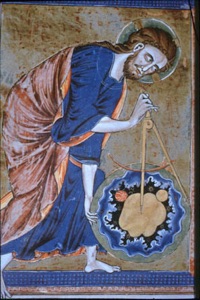Cosmomorphic Motifs
Всесвітні мотиви
Cosmomorphic Motifs
Всесвітні мотиви

Under construction
Below are brief descriptions of many Cosmomorphic motifs and symbols. For more detailed information and examples of pysanky with these motifs, go to the corresponding pages in the Cosmomorphic Motifs Gallery.
Among the oldest and most important symbols of pysanky is the sun, and the simplest rendering of the sun is a closed circle with or without rays. Pysanky with sun motifs were said to have been especially powerful, because they could protect their owner from sickness, bad luck and the evil eye. In Christian times the sun symbol has come to represent life, warmth, and the love and eternal existence of God.

The sun can also appear as a flower or a spiral. The swastika, a "broken cross" or "ducks’ necks" also represented the sun in pagan times; it can be found in ancient Sanskrit as well. (The traditional swastika had its arms pointing to the left; when Hitler appropriated this ancient symbol for his Nazi party, he changed the direction of the arms to the right. The swastika is still commonly used as a decorative motif by the Hindus in India. )

Pysanky from all regions of Ukraine also depict an eight-sided star, which in the past was a symbol of the sun god Dazhboh.





(Above: just a few of the many pysanky with eight- or sixteen-pointed stars.)
Six-sided stars can also be seen, and sometimes stars are represented as dots. They were believed to foretell good fortune. The moon is sometimes seen; it is begged to shed its light at night to help the traveller, and to chase away evil powers from the household.



Back to MAIN Symbolism home page.
Back to MAIN Pysanka home page.
Back to Pysanka Index.
Search my site with Google

The sun, the moon, the stars